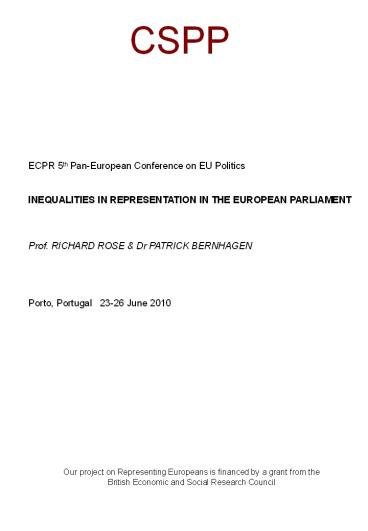Figure 5.3 SUPPORT FOR ALTERNATIVE REGIMES - PowerPoint PPT Presentation
Title:
Figure 5.3 SUPPORT FOR ALTERNATIVE REGIMES
Description:
Title: Figure 5.3 SUPPORT FOR ALTERNATIVE REGIMES Author: UoA Last modified by: Ohna Robertson Created Date: 10/21/2005 9:22:24 AM Document presentation format – PowerPoint PPT presentation
Number of Views:75
Avg rating:3.0/5.0
Title: Figure 5.3 SUPPORT FOR ALTERNATIVE REGIMES
1
ECPR 5th Pan-European Conference on EU
Politics INEQUALITIES IN REPRESENTATION IN
THE EUROPEAN PARLIAMENT Prof. RICHARD ROSE
Dr PATRICK BERNHAGEN Porto, Portugal
23-26 June 2010
Our project on Representing Europeans is financed
by a grant from the British Economic and Social
Research Council
2
REPRESENTATION IN THE EUROPEAN
PARLIAMENT One person, one vote YES all
EU citizens can vote One vote, one value NO
the value varies radically between countries
3
Figure 1.1 CROSS-NATIONAL INEQUALITY IN EUROPEAN
PARLIAMENT, 2009
Index of inequality (100 complete equality)
Under-represented
Over-represented
Source Calculated by dividing the population per
MEP in each country by the number of electors per
MEP in the whole EU, as reported in Table 1, and
multiplying the result by 100.
4
Figure 1.2. DEGREES OF INEQUALITY IN
REPRESENTATION
Gini Index of Inequality
Maximum inequality
Source Calculated by the authors.
5
Explanation PATH DEPENDENT INEQUALITIES IN
REPRESENTATION The ECSC pact in the early 1950s
Carried over into the Council of Ministers in
1957 And into the first elected Parliament
1979 Increasing inequality Gini index 0.21 in
1979 0.27 in 2010
6
Table 3.1 EUROPEAN PARLIAMENT PARTIES VOTES PER
MEP
MEPs Votes mn Votes per MEP EP mean
Euro. People's 265 54.0 204,000 101
Socials Democrats 184 37.9 206,000 102
ALDE 84 17.2 204,000 101
Greens 55 12.3 223,000 110
Con Reform 54 7.7 142,000 70
Left-Nordic Green 35 6.4 182,000 90
Freedom Democ'y 32 7.7 240,000 119
Non-aligned 27 5.6 207,000 102
European Parliament 736 149.0 202,000 100
7
Table 3.2 PROPORTIONALITY OF REPRESENTATION OF
EP PARTY GROUPS
Votes Votes Seats Seats
Countries with seats N (000) N Diff Seats-vote
EPP 26 54,043 36.2 36.0 265 0.2
SD 27 37,924 25.4 25.0 184 0.4
ALDE 19 17,246 11.5 11.4 84 0.1
Greens 14 12,258 8.2 7.5 55 0.7
ECR 8 7,779 5.2 7.3 54 -2.1
Left 13 6,433 4.3 4.8 35 -0.5
EFD 9 7,676 5.2 4.3 32 0.9
Non-aligned 9 5,600 3.7 3.7 27 0.0
Totals 27 149,000 100 100 736
Seats, party groups as of EP 26 July 2009.
Numbers to be double checked.
8
Table 3.3 EFFECT OF OVER-REPRESENTATION ON EU
BENEFITS
Dependent variable Net benefit from contribution
to EU budget, 2008 Variance accounted for
adjusted R2 58
b s.e.
Over-representation in EP 5.68 2.05
Per capita GDP, 2007 0.02 0.01
Employment in agriculture 26.03 11.9
Unemployment 63.26 39.24
Outliers (Belgium, Luxembourg) 656.88 303.17
p lt 0.05 p lt 0.05 p lt 0.05
Source Net benefit Calculated from Potton
(2010 Table 1). Representation index as in
Figure 1.1. Per capita GDP Eurostat. Percent
employment in agriculture, unemployment 2007
World Bank.
9
RE-ALLOCATING MEPs LISBON TREATY CONSTRAINTS
Minimum of 6 seats per party
Maximum of 96 seats per country CRITERIA FOR
EVALUATION Gini Index of Inequality. 0
means no inequality Pareto optimal. No
(or very few countries) lose an MEP
Lamassoure-Severin definition of degressive
proportionality
10
Table 4.1 ALTERNATIVE FORMULA FOR ALLOCATING EP
SEATS COMPARED
Gini Pareto Pareto Non-ordinal Lam.Severin
Gain Lose Non-ordinal Lam.Severin
Status quo
4.1 Existing 0.27 n.a. n.a. 9
Adaptive reforms
4.2 Add 18 seats 0.27 12 0 5
4.3 Enlargement to 29 0.29 10 11 0
4.4 Match EU Council 0.35 22 5 5
New design
4.5 Square root formula 0.36 20 6 0
4.6 Parabolic 0.26 11 9 2
4.7 Mixed methods 0.25 12 14 5
Sources As cited in the text.
11
IMPLICATIONS ?Party coalitions rather than
national populations drive the EP ?Trans and
inter-institutional politics drive EU
outputs ?Inputs of voters remote or absent as
well as unequal ?Majone and Scharpf now claim
more popular input needed But the question is
HOW?
12
(No Transcript)































